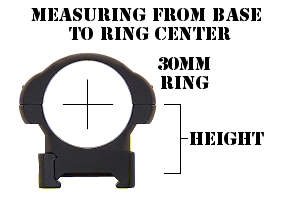No products
Product successfully added to your shopping cart
There are 0 items in your cart. There is 1 item in your cart.
Categories
-
Binoculars
-
Celestron Binoculars
- Celestron Cavalry Binoculars
- Celestron Cometron Binoculars
- Celestron Cypress Binoculars
- Celestron Echelon Binoculars
- Celestron Granite Binoculars
- Celestron Landscout Binoculars
- Celestron Nature DX Binoculars
- Celestron Outland X Binoculars
- Celestron SkyMaster Binoculars
- Celestron Trailseeker Binoculars
- Celestron UpClose G2 Binoculars
- German Precision Optics Binoculars
- Luna Optics Binoculars
- Meade Binoculars
-
Opticron Binoculars
- Opticron Adventurer Binoculars
- Opticron Discovery Binoculars
- Opticron Explorer Binoculars
- Opticron HR WP Binoculars
- Opticron Imagic TGA Binoculars
- Opticron Natura BGA Binoculars
- Opticron T4 Trailfinder WP Binoculars
- Opticron Oregon 4 Binoculars
- Opticron Savanna Binoculars
- Opticron Traveller BGA Binoculars
- Styrka Binoculars
- Binocular Accessories
-
Celestron Binoculars
- Flashlights
- Night Vision
- Open Sights
- Outdoor Gear
- Rangefinders
- Red Dot Sights
- Rifle Scopes
- Scope Mounts
- Spotting Scopes
- Tactical Gear
- Telescopes
- Thermal Vision
- Trail Cameras
- Tripods
- Clearance
- Used & Demo
- Archery
- 12 Survivors
- Aero Precision
- AIM Sports
- BKL Scope Mounts
- Celestron
- Dead Ringer
- EGW
- F3R Machine
- Firefield
- Full Moon Optics
- Fulton Flashlights
- Galloway Precision
- German Precision Optics
- Harris
- HIVIZ Sights
- Holosun
- INTEGRIX
- Kopfjager
- Leupold
- LPA Sights
- Luna Optics
- Meade
- NcSTAR
- NEBO
- Opticron
- Pulsar
- RedRing Shotgun Sights
- See All
- Seekins Precision
- Sightmark
- SiteLite
- Styrka
- Talley
- Tech Sights
- True Utility
- UTG
- VISM
- Warne
Follow us on Facebook
Measuring Scope Height and Determining Scope Ring Height
Why is proper scope ring height important?
Ring height is often overlooked when fitting a scope to a rifle. Fit your scope with rings that are too high, and you may not have a good cheek weld, causing your accuracy to suffer. Try to fit rings that are too low, and your scope may hit the barrel of your rifle before it rests on the front scope ring. The proper ring height should be somewhere in between these two extremes to ensure the most comfortable fit and accurate shooting.
How do I measure my scope height?
Most rifle scopes are identified by several numbers in the following format:
[minimum magnification] - [maximum magnification] x [objective lens diameter in mm]
To get a rough measurement of scope height, just take the objective lens diameter (usually measured in millimeters), add 2-4 mm for the thickness of the scope body, and divide the result by two to determine the scope height. The resulting number is the distance from the center of the scope body to the outside of the tube at its thickest point at the objective. For a more accurate measurement, you can just measure the diameter of the scope body at the objective lens and divide the number in half. It's best to measure and get an exact number.
To convert from inches to millimeters, multiply your measurement by 25.4.
Choosing the right base
This is easy compared to ring selection, because most ring manufacturers will make only one specific base for your receiver. One thing you do need to keep in mind is the height of the bases, because they will contribute to ring height.
Choosing the right rings
If you know your scope height, you know the minimum height that the centerline of the scope must sit above the receiver. The next step is to choose the smallest ring and base combination that is higher than this measurement. For example, if you've determined that your scope height is 22mm, you can use any base and ring combination higher than 22mm. But some manufacturers measure their scope ring heights differently, so it's important to do the proper research before buying.
Measuring ring height
Ring heights vary from manufacturer to manufacturer. That means that a high ring from one manufacturer will probably be a different height than a high ring from another manufacturer. Generally, there are two accepted methods of measuring ring height.
Method 1: Measuring from base to ring center

If your chosen manufacturer uses this method of measuring their rings, then this part is easy. Just take your base height, add it to the ring height, and if it's the smallest combination available that is still larger than your scope height, you have found your ring and base combination.
Method 2: Measuring from base to ring edge

If your chosen manufacturer measures from the base to the inner edge of the ring, you'll have to do a little more calculation.
If your scope has a 1" scope tube, add 12.7mm to the combined height of the scope ring and base to determine if it's greater than your scope height measurement.
If your scope has a 30mm scope tube, add 15mm to the combined height of the scope ring and base to determine if it's greater than your scope height measurement.
Other factors to consider
These methods of measuring scope ring height do not take other factors into consideration, such as bolt action clearance, or the presence of open sights and other accessories. Always add extra space for these situations.

